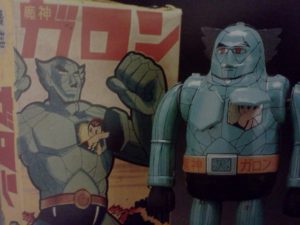
I was sitting back and relaxing this week finally now that the theater season has wound down for a few months (aside from writing reviews and this column here, I also direct stage plays and musicals). I decided to kick out some beats and put on some old Pot Shot albums I haven’t listened to in awhile. Pot Shot was this great ska band from Japan that was active from 1995 to 2005, and released about six albums in that time, four of them making their way to our shores through the small but very-very cool ska/punk label Asian Man Records. Their music was fast and non-stop, never playing that slow Reggae-like ska, just all the fast stuff (and if you try to skank to it you’ll probably get whip lash it’s so fast). So what does this have to do with comics? Well, I’ll tell you what it has to do! Funny thing is, when you listen to music sometimes depending on what it is, old memories can flood back. Oddly enough, and maybe appropriate with their recent closing down, I began to think about Tokyopop here in the States and MixxZine in their glory days, and how they changed the manga/anime scene here. So today at From Friendly Ghosts To Gamma Rays, we are going to take a look back at MixxZine, as well as a gander at the new issue of Mega Man from Archie comics, take a peek at Space Warped from Kaboom!, and we’ll finish it all off with a look at anime classic Alakazam The Great!
 On The Stands: Space Warped #1
On The Stands: Space Warped #1Publisher: Kaboom!
Writer: Herve Bourhis
Art: Rudy Spiessert
Translation: Dan Heching
Americanization: Kevin Church
Space Warped can best be described as Star Wars meets Dungeons and Dragons. Obviously the story is a parody of Star Wars: A New Hope, yet it is stuck in the days of druids and castles, rather than outer space. In fact the original title of this French comic, Rustic Wars, describes it to a tee; then again, how many people would buy a parody called Rustic Wars versus a parody called Space Warped? Hence my theory behind the name change. Space Warped is an enjoyable piece of work in which I laughed out loud at plenty of times in these pages, however, Robot Chicken it is not (unlike what the marketing guys at Boom! would like to have you think). The comic has a very British feel to it, although there is oddly a credit for Americanization. In no way do I feel this a bad thing at all; I thought the comic was really funny, but if you’re looking for another Family Guy special or Robot Chicken parody here, you’re just not going to get it.
The art work by Spiessert is fun, cartoony, and fits the right tone for what this is. It is colorful and I was in the love with the look. The writing is interesting and funny; Bourhis receives creative points for placing his parody in the dark ages, versus a Space Balls take of just sticking it in space. By doing this he gives us a few unique gag set-ups that are gold, like when Jean-Luc (instead of Luke) gets his sword and comments how it’d be cooler if it glowed and made a humming sound when it waved. I haven’t read the original Rustic Wars in French, so I can only assume that the translation/Americanzation pays off and adds to the title; it usually does in the case of comedies when you localize things for other countries. TV shows like Samurai Pizza Cats serve as fine examples of Americanization working here in the States versus a straight translation.
My final recommendation is if you like Star Wars and want some laughs, pick up this little Euro-gem that is on stands now.
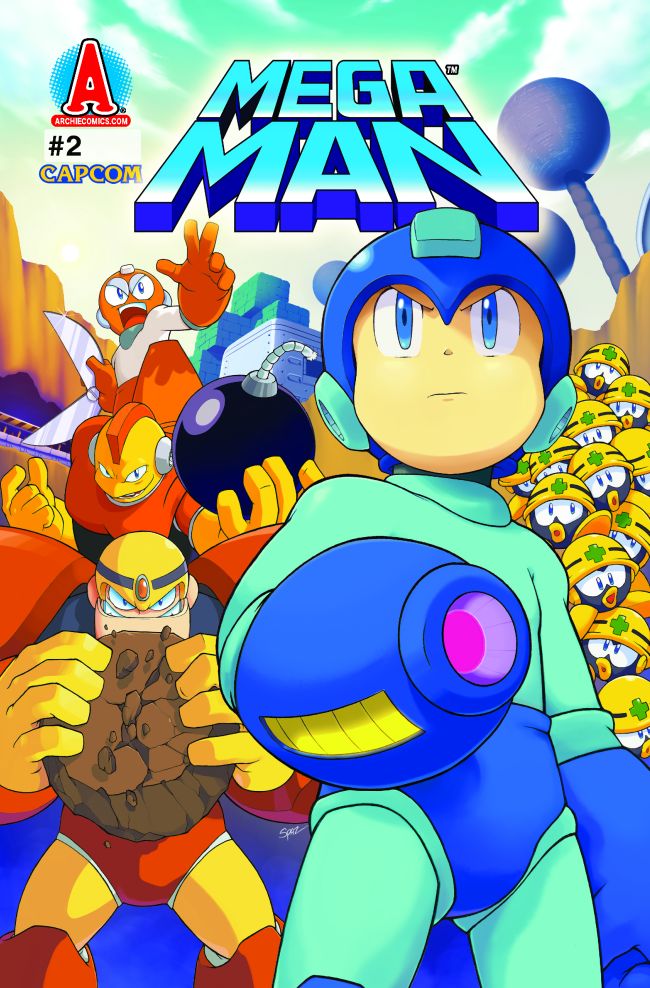 Out On Stands: Mega Man #2
Out On Stands: Mega Man #2Publisher: Archie Comics
Writer: Ian Flynn
Art: Patrick “Spaz” Spaziante
They did it and did it right!
I admit I was nervous how Archie was gonna handle Mega Man, but they knocked it out of the park! You know how with some titles the art on the cover is amazing but the interior is a let down? Not here! From the cover to the last page, it is everything we wanted to see art and story wise from a Mega Man book! The action flies across the page and layouts feel perfect. Also the little details, like the Professor’s tracking screen looking like the option screen in the original Mega Man video game, are priceless touches that really please long time fanboys of the character and his games. The characters thus far are exactly how we wanted them to be, and action wise it’s amazing. All the characters’ personalities and cool details are here, even down to Mega Man’s real name being Rock (another fanboy pleaser). The story in this issue didn’t unfold too deeply, but it didn’t need to because it is primarily an action issue with Rock kicking butt, which is what we want. However, for fans who want more of a story, the roots are there and slowly taking form in the writing.
In issue #2, Mega Man starts to fight off the robot masters that the evil Dr. Wiley has unleashed. We get Mega Man’s innocent personality to a tee as he is confronted with a battle he doesn’t want to have to fight if he doesn’t have to, but must. We get to see him take other masters’ powers, and there’s plenty of action that leaves us on a cliff hanger waiting for the next issue. If you want a really awesome read, pick it up!
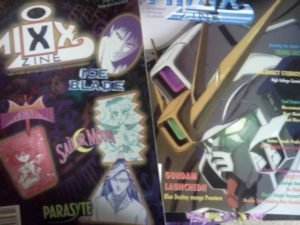 Can you dig it (out of the back bins): MixxZine
Can you dig it (out of the back bins): MixxZineBack in the day of the late 1990s, anime/manga was finally starting to launch and there were some cool things out there. This was when Toonami just started up and it was mainly old Hanna-Barbera action cartoons, Dragon Ball Z could be found on only syndicated TV, and the only manga anthology was Animerica Extra printed by Viz Media. Then MixxZine came along, and it was quite a game changer. It was a new manga anthology that you could find at your local comic shops or Walden Books/Borders/Barnes and Noble chain, and most importantly for most anime/manga fans at the time, it had the original uncut Sailor Moon as one of its stories. MixxZine was great, the right price, and released just at the right period of time in comics. They were trying to do everything right, even making the pages one color like manga mags from Japan. MixxZine also helped push CLAMP into the
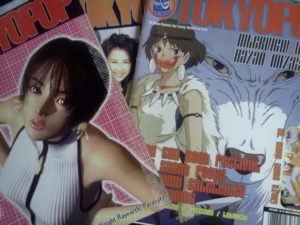 hearts of the US manga/anime community with Magic Knight Rayearth. Trying to push forward they would soon change their name to Tokyopop, as well as change the format of the magazine to fit two black and white pages, side ways per page, and began adding in a ton of articles on Japanese culture, anime, and manga (even a handful of related articles, although not quite Japanese, like interviews with animation legend Don Bluth or Spawn artist Todd MacFarlane). Tokyopop also started printing a ton of manga collections, which were really showing up Viz at the time, and at that point Tokyopop would publish the entire manga series from start to finish, where other publishers like Viz or the short lived Sun Comics at the time would cancel due to low sales. There is no doubt Tokyopop set a new bar and level to reach for with manga in the United States. The manga graphic novel boom of the past decade is in part due to them. Also the numerous manga anthologies that have come and gone over the years like Shonen Jump (still going), Shojo Beat, Dark Horses’s Manga Blast, Rajin Comics, and most recently Yen Press (now just online), are in part thanks to MixxZine/Tokyopop‘s wild success. Although cancelled in 2000, its impact changed the scene and has still lasted until today. If you get a chance to dig up some back issues, please do, and enjoy the numerous titles that graced their pages which included Sailor Moon, Ice Blade, Magic Knight Rayearth, Parasyte, Sorcerer Hunters, Harlem Beat, and Gundam: Blue Destiny.
hearts of the US manga/anime community with Magic Knight Rayearth. Trying to push forward they would soon change their name to Tokyopop, as well as change the format of the magazine to fit two black and white pages, side ways per page, and began adding in a ton of articles on Japanese culture, anime, and manga (even a handful of related articles, although not quite Japanese, like interviews with animation legend Don Bluth or Spawn artist Todd MacFarlane). Tokyopop also started printing a ton of manga collections, which were really showing up Viz at the time, and at that point Tokyopop would publish the entire manga series from start to finish, where other publishers like Viz or the short lived Sun Comics at the time would cancel due to low sales. There is no doubt Tokyopop set a new bar and level to reach for with manga in the United States. The manga graphic novel boom of the past decade is in part due to them. Also the numerous manga anthologies that have come and gone over the years like Shonen Jump (still going), Shojo Beat, Dark Horses’s Manga Blast, Rajin Comics, and most recently Yen Press (now just online), are in part thanks to MixxZine/Tokyopop‘s wild success. Although cancelled in 2000, its impact changed the scene and has still lasted until today. If you get a chance to dig up some back issues, please do, and enjoy the numerous titles that graced their pages which included Sailor Moon, Ice Blade, Magic Knight Rayearth, Parasyte, Sorcerer Hunters, Harlem Beat, and Gundam: Blue Destiny. Something To Watch: Alakazam The Great
Something To Watch: Alakazam The GreatThis movie rocks. Made in Japan in 1960, based off the manga Boku no Son Goku by Osamu Tezuka and released under the title Saiyuki (you can watch the Japanese trailer here), it was redubbed Alakazam The Great for its United States release in 1961. One of the earliest works of Japanese animation to be seen in the US (and released in our theaters no less at a time when much of this went right to TV movies when it came over), it is a fascinating piece both for its classic animation and interesting English dub. Originally an adaptation of the Chinese Monkey King folklore (which perhaps you are familiar with from more straight adaptations like Monkey Magic), it follows the adventures of Alakazam, a monkey who becomes king of the animals, but is unhappy with his power and is lusting for more. He learns magic and eventually challenges the Gods (well, the great magicians in the dub, although their ruler clearly looks like Buddha), but is punished for his arrogance and forced to help a monk on his journey to find sacred scriptures in the west, with a caravan of odd helpers found along the way. Although the dub is a bastardization of the original material, it is still a wonderful period piece in its own way with the added coolness factor of Alakzam’s main voice done by Peter Fernandez (voice of Speed Racer and a dozen other characters), and his singing voice done by teen idol of the time Frankie Avalon. Sterling Holloway, best known as the voice of Disney’s Winnie the Pooh, narrates our tale, adding more classic Hollywood coolness to the mix. The film didn’t do well upon its theatrical release here, but has been fondly remembered as a staple of 1960s/1970s TV movies on our airwaves. As for Japan, its origin country, it is said it had the impact of helping further push Tezuka’s interest into animation, for aside from being adapted from his manga, he would stay on the film as a character designer, and only a few years after the film’s release we’d get, in 1963, Astro Boy, which would change anime as we know it. The film is highly entertaining with plenty of things to love. It was released by MGM on video a few years back, and while there is no known official American DVD release yet (there are bootlegs), you can find it officially streaming on Netflix.
That’s it for this week, see you soon, and remember, Jet Jaguar loves you!
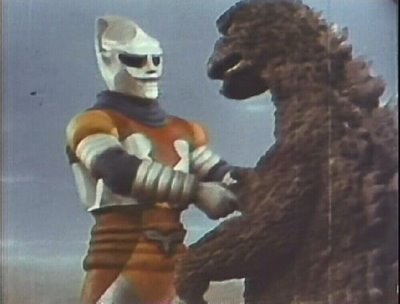
Drew McCabe
drew@comicattack.net

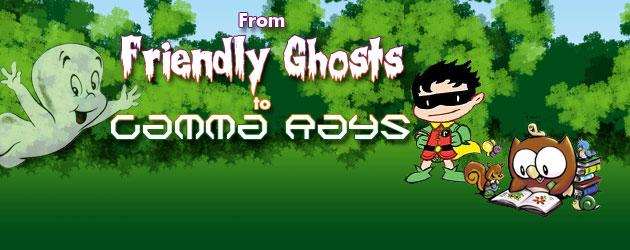

Space Warped looks fun. I love parodies!